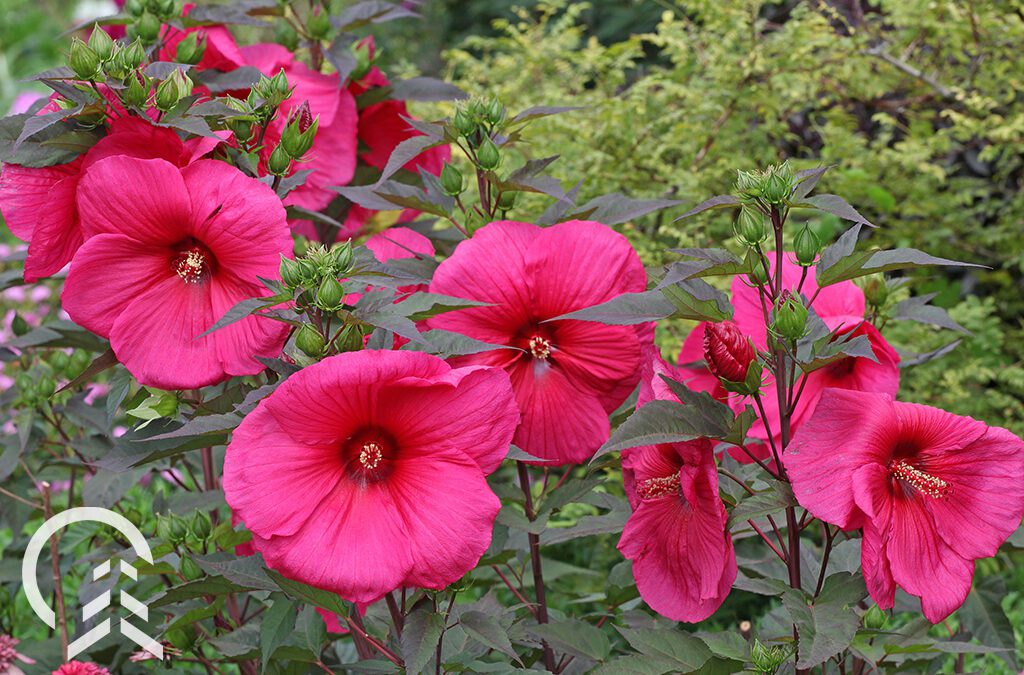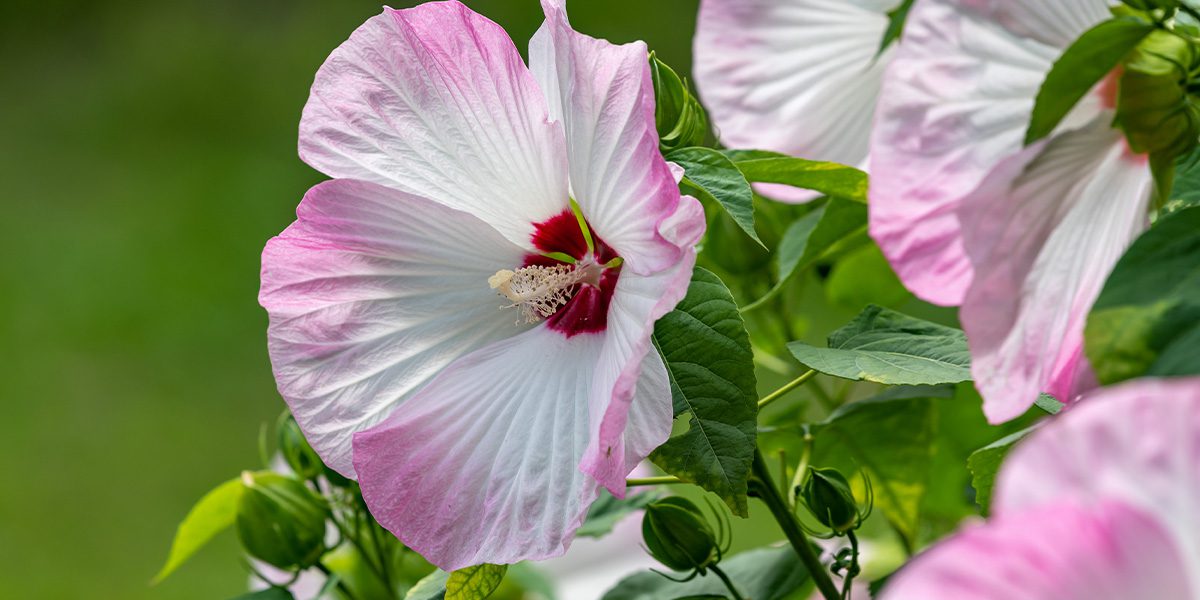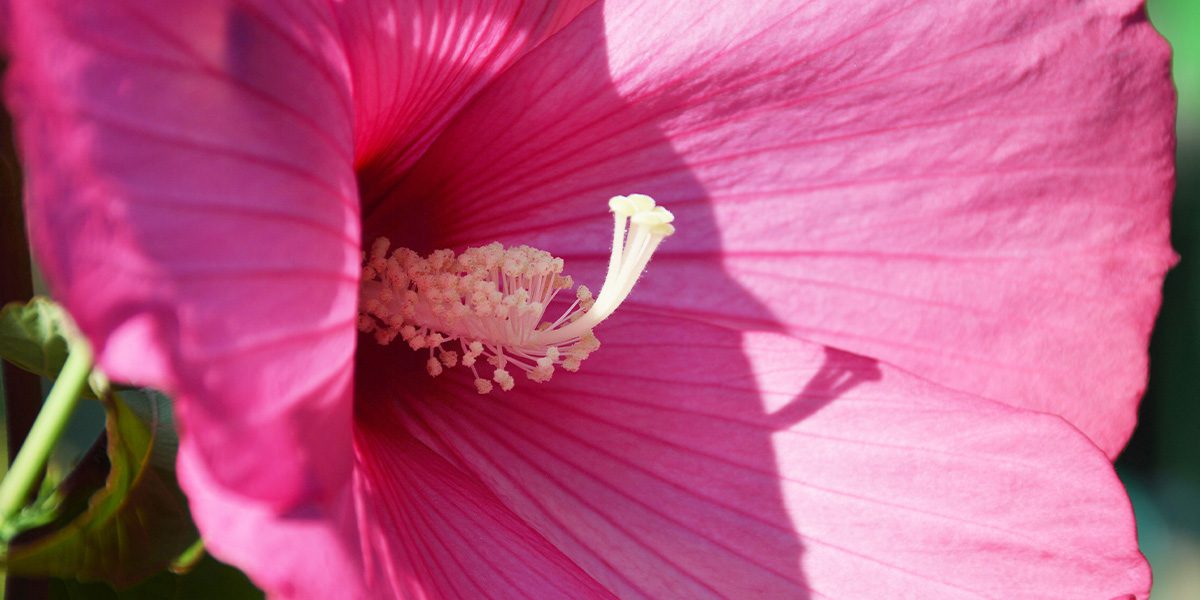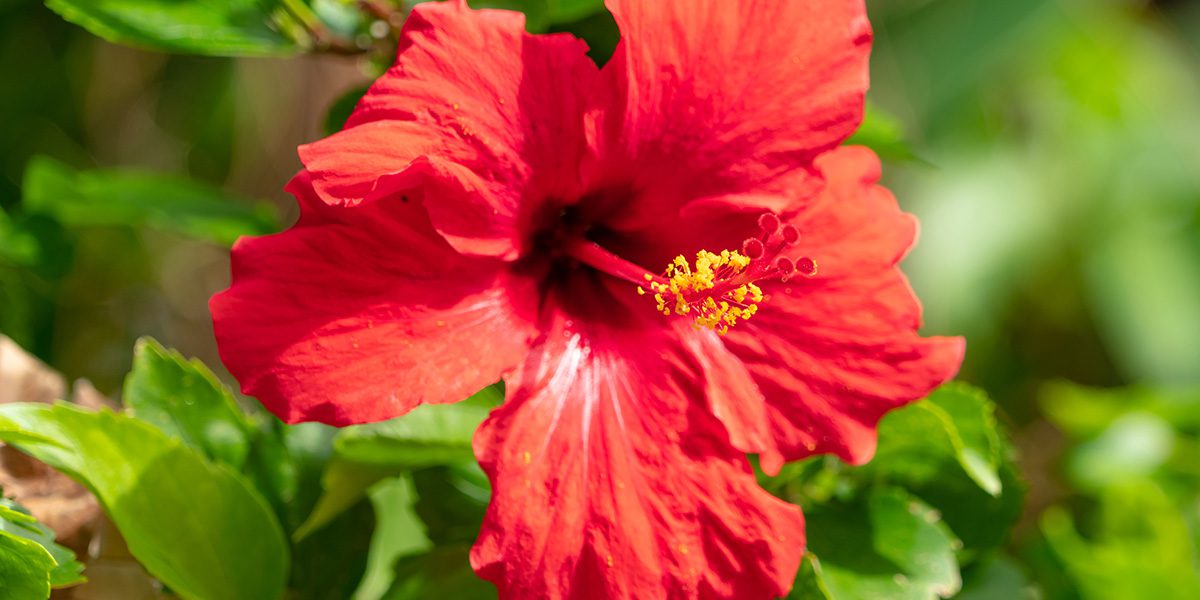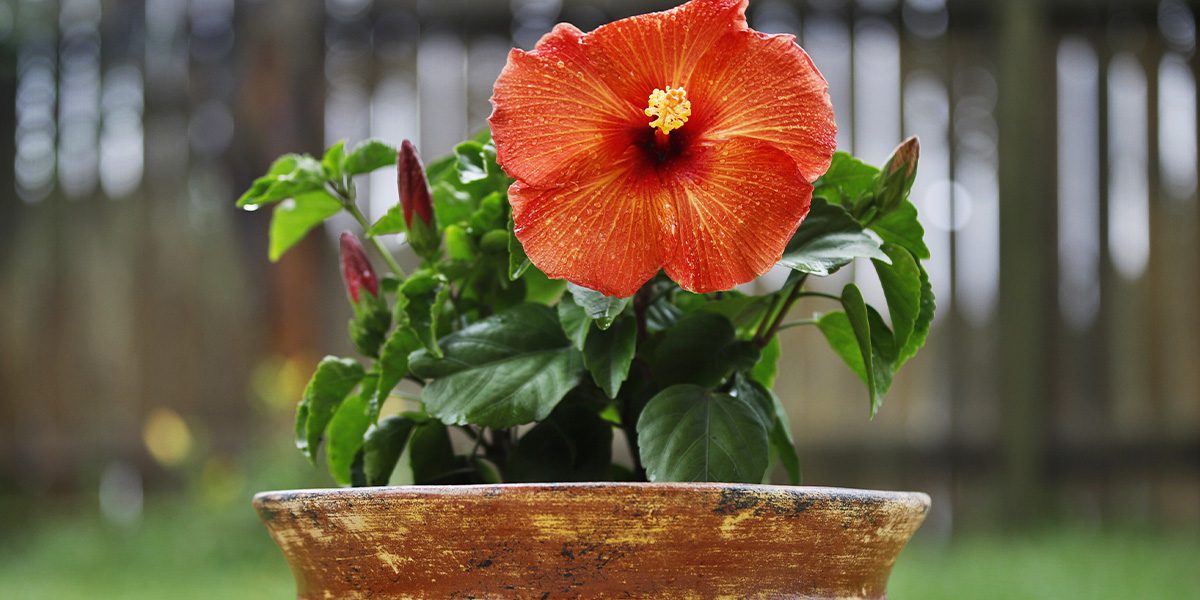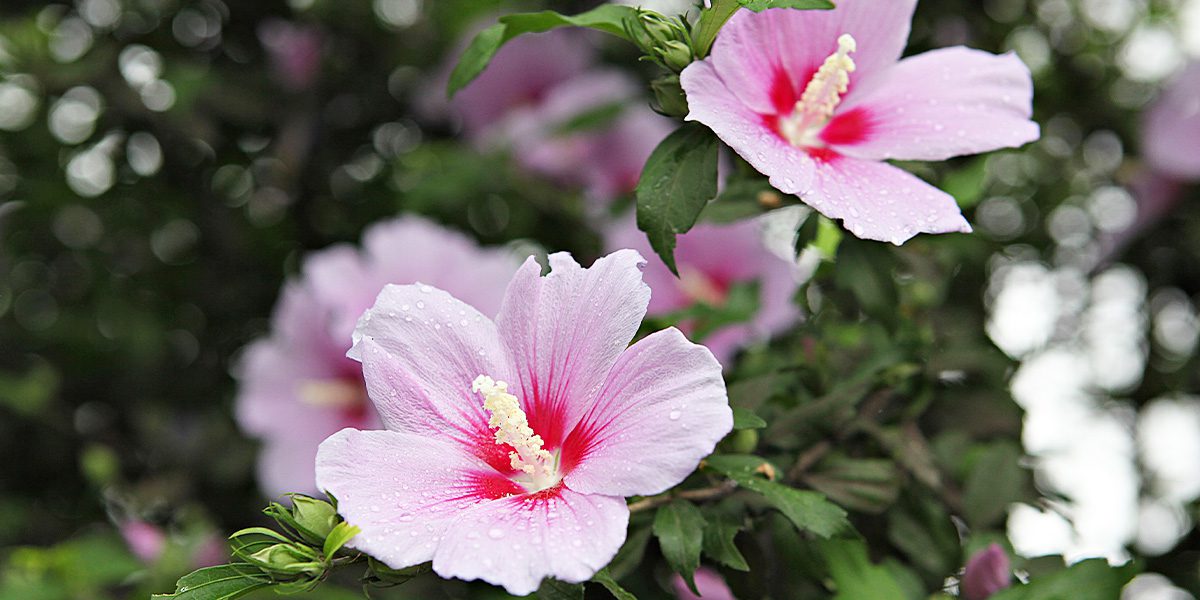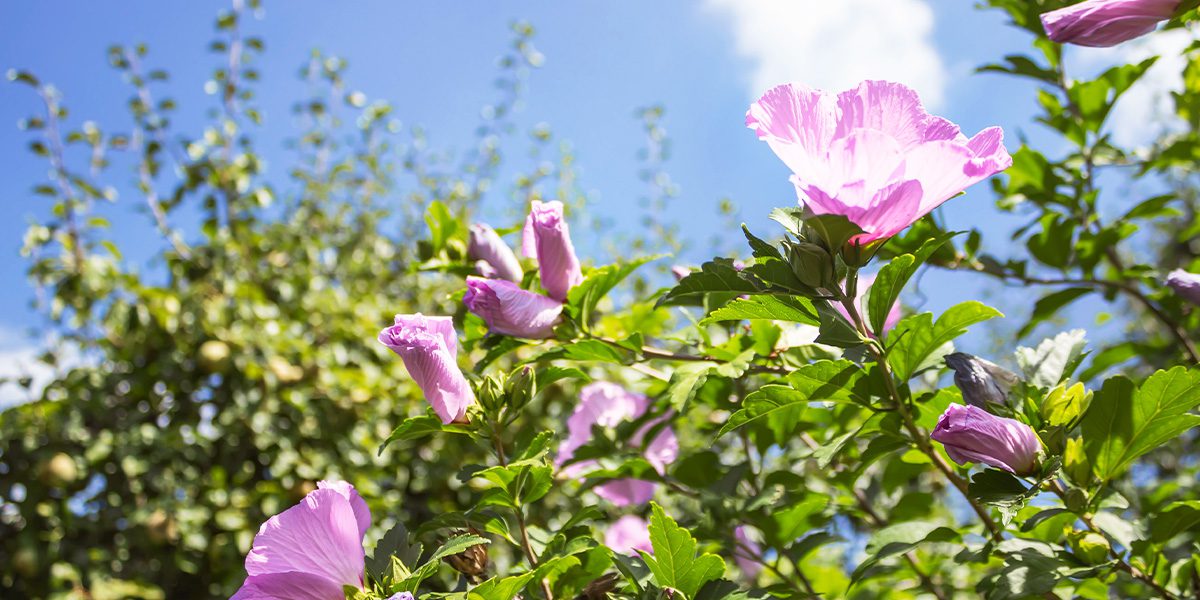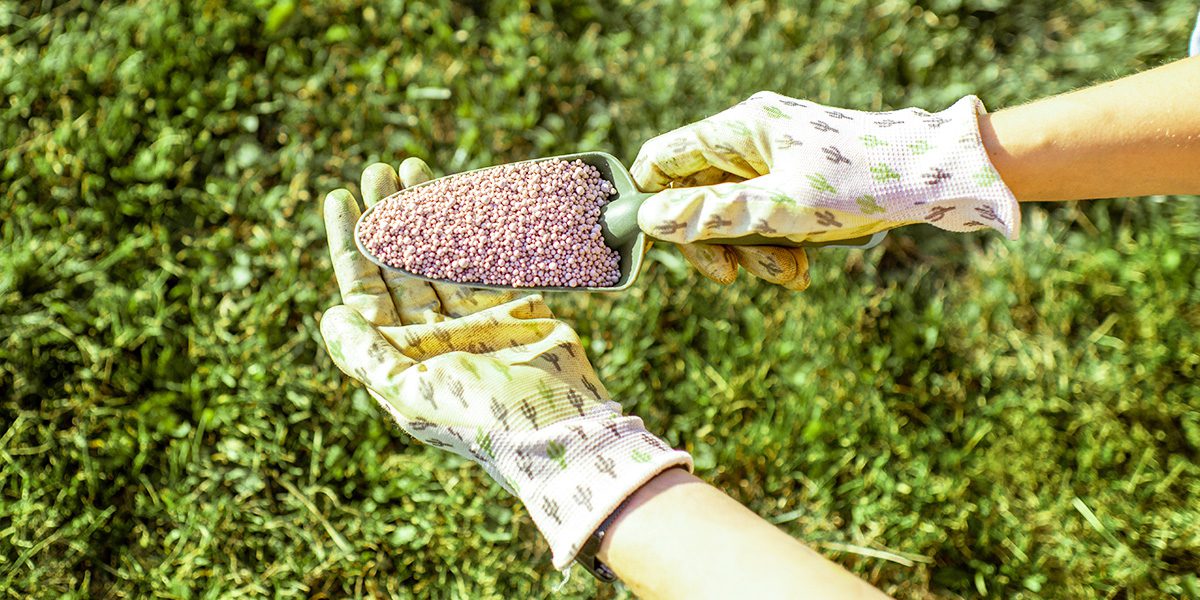Explore, experiment, and revel in the joy of cultivating hibiscus varieties that speak to your gardening vision.
In the suburbs of Chicago, where urban gardeners in Carpentersville and Bloomingdale seek to transform their landscapes into vibrant havens, hibiscus plants emerge as enchanting additions. From their captivating blooms to unique growth habits, understanding the diverse types of hibiscus is key to cultivating a garden that thrives. Let’s embark on a journey into the world of hibiscus, tailored for the unique needs of our local audience.
Types of Hibiscus
Hibiscus plants offer a kaleidoscope of colors and forms, each variety contributing its unique charm to your garden. Among the diverse types, the hardy hibiscus (Hibiscus moscheutos) stands tall with its colossal, dinner-plate-sized blooms, adding a dramatic flair to your landscape. For those seeking a touch of the tropics, the tropical hibiscus (Hibiscus rosa-sinensis) unfolds its vibrant, exotic petals, creating a stunning focal point. Meanwhile, the Rose of Sharon (Hibiscus syriacus) graces gardens with its elegant, deciduous presence, offering a delicate beauty that evolves with the changing seasons.
Hardy Hibiscus (Hibiscus moscheutos)
Colors & Varieties
Imagine a burst of color that rivals the vibrancy of a summer sunset—that’s the allure of the hardy hibiscus. These robust plants come in an array of hues, ranging from radiant pinks and reds to pristine whites. Varieties like ‘Summer Storm’ boast deep maroon foliage that provides a stunning contrast to the blooms, creating a visual masterpiece in your garden.
Growth Habits
The hardy hibiscus is a deciduous perennial known for its upright and bushy growth habit. With heights reaching up to 6 feet, these plants make a bold statement in the garden. Their large, showy flowers can measure up to 12 inches in diameter, making them true focal points in any landscape.
Selecting the Right Location
The success of your hardy hibiscus venture begins with choosing the perfect spot. These plants thrive in full sun, so select a location that receives at least six hours of direct sunlight daily. In Carpentersville and Bloomingdale, where sunlight is abundant, finding the ideal spot for your hardy hibiscus is a breeze.
Soil Preferences
This variety of hibiscus is not particularly-finicky about soil but does best in a well-drained, nutrient-rich environment. Incorporate organic matter into the soil to enhance its fertility and drainage. In areas with heavy clay soil, consider amending the soil with compost to improve its structure.
Planting Depth & Spacing
When planting a hardy hibiscus, ensure that the root ball is level with the soil surface. Spacing is crucial to allow for proper air circulation and prevent overcrowding. Aim for a spacing of about 3 to 4 feet between plants to give each one ample room to flourish.
Watering Recommendations
While the hardy hibiscus is relatively drought-tolerant once established, it’s essential to provide consistent moisture during dry spells. Water deeply, ensuring the soil remains consistently-moist but not waterlogged. Mulching around the base helps retain moisture and regulates soil temperature.
Feeding for Flourishing Blooms
To encourage lush growth and abundant blooms, fertilize your hardy hibiscus regularly during the growing season. A balanced fertilizer with a ratio such as 10-10-10 provides the necessary nutrients for these voracious growers. Apply fertilizer in early spring and again in midsummer.
Pruning Practices
The hardy hibiscus benefits from regular pruning to shape the plant and encourage bushier growth. In late winter or early spring, before new growth emerges, give your hardy hibiscus a more thorough pruning. Remove any dead or weak stems, cutting them back to the base.
Winter Preparations
While the term “hardy” suggests resilience, providing some winter care ensures the health of your hardy hibiscus. In late fall, apply a layer of mulch around the base to insulate the soil and protect the roots from harsh winter conditions. In extremely cold temperatures, consider additional protective measures such as burlap wrapping.
Tropical Hibiscus (Hibiscus rosa-sinensis)
With its exotic, vibrant blooms and lush green foliage, the tropical hibiscus brings a touch of the exotic to Carpentersville and Bloomingdale gardens.
Colors & Varieties
The tropical hibiscus is a true showstopper, boasting an extensive palette of colors that mimic the vibrant hues of a tropical paradise. From fiery reds and oranges to soft pinks and yellows, each bloom is a masterpiece. Varieties like ‘Double Orange Supreme’ showcase double-layered petals, adding an extra layer of visual interest to your garden.
Growth Habits
Unlike its hardier cousins, this hibiscus is a tropical perennial that thrives in warmer climates. Its glossy, dark green leaves provide a lush backdrop for the striking flowers.
Selecting the Right Location
For tropical hibiscus to thrive, they require full sun to partial shade. In Carpentersville and Bloomingdale, where sunlight is abundant, finding a sun-drenched spot with some shelter from harsh afternoon sun is ideal. Ensure the location allows for good air circulation to prevent common tropical diseases.
Soil Preferences
The tropical hibiscus prefers well-drained, slightly acidic to neutral soil. Incorporate organic matter into the planting area to enhance soil fertility and drainage. If growing in containers, use a well-draining potting mix to prevent waterlogging.
Planting Depth & Spacing
When planting tropical hibiscus, aim for a planting depth that matches the root ball’s level with the soil surface. Provide ample spacing between plants to allow for optimal air circulation and prevent overcrowding. This not only enhances the plants’ health but also contributes to a visually-appealing landscape.
Watering Recommendation
Tropical hibiscus thrives in consistently-moist soil but does not tolerate waterlogged conditions. Water deeply and regularly, especially during dry spells. Mulch around the base to retain moisture and regulate soil temperature. Container-grown hibiscus may require more frequent watering.
Feeding for Lush Blooms
To promote a lavish display of blooms, feed your tropical hibiscus regularly during the growing season. A balanced fertilizer with micronutrients is ideal. Apply fertilizer every 4-6 weeks, following package instructions for proper dosage, cease fertilization in late fall to allow the plant to enter a period of dormancy.
Pruning Practices
Pruning is a key element in shaping and maintaining the health of your tropical hibiscus. Regularly remove spent blooms to encourage continuous flowering. Additionally, prune for shape and size, ensuring the plant remains bushy and well-proportioned. Heavy pruning can be done in late winter or early spring before new growth emerges.
Protecting from Pests
Keep an eye out for common pests such as aphids, scale, and spider mites. Regularly inspect the undersides of leaves for signs of infestation. Treat pests promptly with insecticidal soap or neem oil. A proactive approach to pest control helps maintain the health and vigor of your tropical hibiscus.
Rose of Sharon (Hibiscus syriacus)
With its delicate flowers, distinctive growth habits, and seasonal grace, the Rose of Sharon graces Carpentersville and Bloomingdale gardens with a touch of classical charm.
Colors and Varieties
The Rose of Sharon enchants with its single or double flowers that resemble hibiscus blooms but carry a distinct charm. Colors range from pristine whites to shades of pink, purple, and blue. Varieties such as ‘Blue Satin’ and ‘Aphrodite’ showcase the diversity of hues available, allowing you to curate a garden palette that suits your aesthetic preferences.
Growth Habits
The Rose of Sharon is a deciduous shrub that boasts a multi-stemmed and upright growth habit. Its branches gracefully arch, creating a pleasing silhouette. During late summer, when many other plants are winding down, the Rose of Sharon steals the spotlight with its profusion of blooms. Its foliage adds to the appeal, providing a verdant backdrop to the stunning flowers.
Soil Preferences
The Rose of Sharon is adaptable to various soil types but thrives in well-drained, loamy soil. Incorporate organic matter into the planting area to enhance fertility and drainage. While these plants tolerate a range of soil pH, a slightly acidic to neutral pH is optimal.
Planting Depth & Spacing
When planting a Rose of Sharon, aim for a planting depth that aligns with the root ball’s level with the soil surface. Spacing is crucial to allow for proper growth and prevent competition for nutrients. Provide at least 6 to 8 feet between plants to allow them to reach their full potential.
Selecting the Right Location
For the Rose of Sharon to thrive, provide a location with full sun to partial shade. Finding a sunny spot with well-drained soil is ideal. Ensure adequate spacing between plants to allow for proper air circulation and prevent overcrowding.
Watering Recommendations
A Rose of Sharon is relatively drought-tolerant once established but benefits from regular watering, especially during dry spells. Water deeply, ensuring the soil remains consistently-moist. Mulching around the base helps retain moisture, suppress weeds, and regulate soil temperature. See more of our drought tolerant plants.
Feeding for Prolific Blooms
To encourage robust flowering, feed your Rose of Sharon with a balanced fertilizer in early spring. Apply fertilizer again in late spring or early summer to support continuous blooming. A slow-release fertilizer is an excellent choice, providing a steady supply of nutrients over the growing season.
Pruning Practices
Pruning plays a crucial role in shaping and maintaining the elegance of the Rose of Sharon. Regularly remove spent blooms to encourage the plant to produce new flowers. Additionally, light pruning in late winter or early spring helps maintain a well-balanced and tidy appearance.
Winter Preparations
While the Rose of Sharon is hardy, providing some winter care ensures the health of your plants. In late fall, apply a layer of mulch around the base to insulate the soil and protect the roots from harsh winter conditions. This extra layer of protection contributes to healthy spring growth.
Planting & Care Tips for Hibiscus Plants
Now that we’ve explored the mesmerizing varieties of hibiscus, let’s delve into the art of planting and caring for these botanical wonders. To set the stage for a flourishing hibiscus garden in Carpentersville and Bloomingdale, follow these step-by-step instructions:
Choosing the Right Spot: Hibiscus plants crave sunlight, so select a well-drained location that receives at least six hours of direct sunlight daily.
Soil Matters: Ensure your hibiscus is planted in well-draining soil with a slightly acidic to neutral pH. Incorporate organic matter for added nutrition.
Planting Depth: When planting, make sure the hibiscus root ball is level with the soil surface. If you’re planting in containers, use a high-quality potting mix.
Watering Recommendations: Keep the soil consistently-moist but not waterlogged. Water your hibiscus regularly, especially during dry spells, and mulch around the base to retain moisture.
Feeding Time: Fertilize your hibiscus regularly during the growing season with a balanced fertilizer. A slow-release formula every 4-6 weeks will provide the necessary nutrients.
Expert Tip: For container-planted hibiscus, choose a large pot to accommodate their expansive root system, and ensure it has drainage holes.
Maintaining Hibiscus for Lush Blooms:
Caring for hibiscus goes beyond planting—it’s an ongoing commitment to nurturing these botanical gems. To ensure your hibiscus graces your garden with lush and abundant blooms, follow these essential maintenance tips:
Pruning Practices: Regularly deadhead spent flowers to encourage the plant to produce new buds. In late winter or early spring, give your hibiscus a more thorough pruning to shape and invigorate the plant.
Watering Wisdom: While hibiscus appreciates consistent moisture, avoid overwatering, as it can lead to root rot. Water in the morning to allow the foliage to dry during the day, minimizing the risk of diseases.
Fertilizing Facts: Use a balanced fertilizer with micronutrients to support healthy growth and prolific flowering. Avoid excessive nitrogen, as it can result in lush foliage at the expense of blooms.
Pest Patrol: Keep an eye out for common pests like aphids and spider mites. Regularly inspect the undersides of leaves for signs of infestation. Treat promptly with insecticidal soap or neem oil.
Winter Preparations: In the colder months, protect your hibiscus by mulching around the base to insulate the soil and shield the roots from harsh winter conditions. Consider bringing potted hibiscus indoors during the winter.
Expert Tip: Embrace the seasonal rhythm of your hibiscus, allowing them to enter a brief period of dormancy during winter before returning with vigor in spring.
As you embark on this journey into the world of hibiscus varieties and cultivation, remember that each bloom carries the potential to transform your garden into a canvas of color and elegance. Whether you opt for the dramatic flair of hardy hibiscus, the exotic charm of tropical hibiscus, or the timeless beauty of Rose of Sharon, the key lies in understanding the unique needs of each variety and providing them with the care they deserve.
In the coming seasons, let your hibiscus garden flourish, a testament to your dedication and the unique beauty of our local landscape. Explore, experiment, and revel in the joy of cultivating hibiscus varieties that speak to your gardening vision. At Platt Hill Nursery, we’re not just here to provide expert advice—we’re here to witness your garden’s transformation into a hibiscus haven. Happy gardening, Carpentersville and Bloomingdale!
Platt Hill Nursery is Chicago’s premier garden center and nursery.

